Canada Canola Production Estimates Reduced Due to Dry Conditions and Low Planted Areas
Canada’s canola production estimates for the 2025/26 season have been revised down, primarily due to a decline in soil moisture levels, a drier May precipitation outlook and reduced planted areas of canola compared to 2024. Despite dry conditions, canola yields are expected to increase, supported by stronger precipitation outlook from June to October 2025. Octopusbot’s latest production estimate is higher than the AAFC estimates.
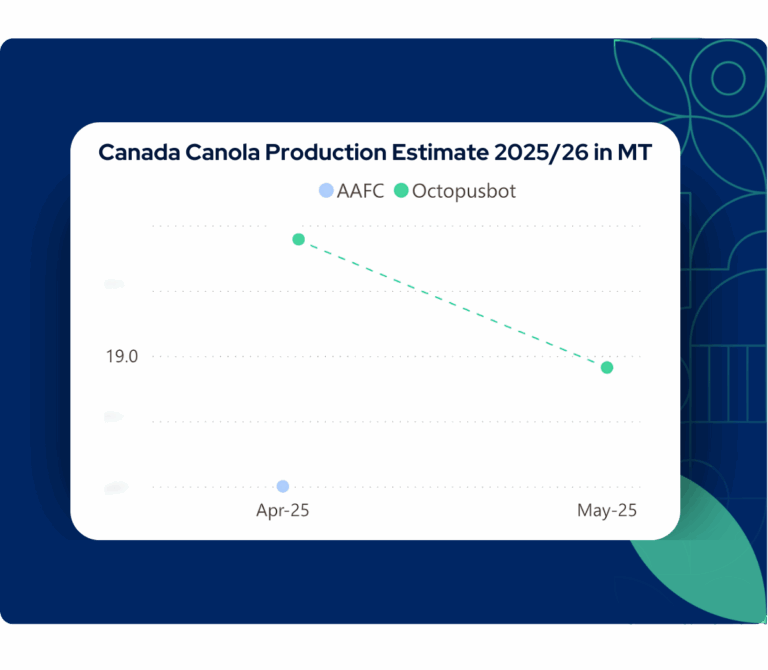
Key Drivers Impacting Canola Production
The decline in Canada’s canola production estimates is driven by these significant factors:
- Soil Moisture: Soil moisture levels declined in April 2025. Near median-levels were observed across all regions, above-median levels in Manitoba, near median in Saskatchewan, and below median in Alberta.
- Precipitation: April 2025 rainfall was below median across all provinces, averaging 80% of the median.
- Planted Areas: Canola planted area decreased by 1.7% compared to 2024, based on the latest Statistics Canada planted acres estimate.
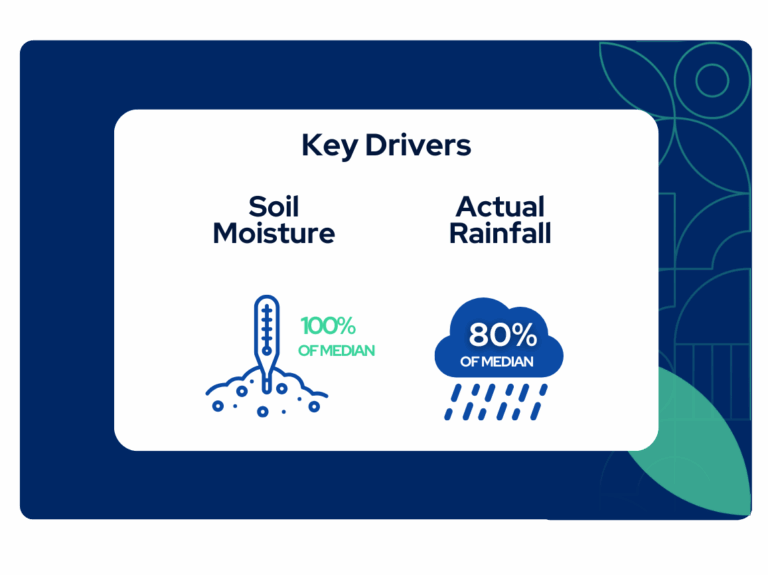
Seasonal Outlook
The precipitation outlook for May 2025 indicates shows below-median levels in all provinces, averaging 80% of the median. The June to October 2025 outlook indicates near to above-median rainfall, at 112% of the median across all provinces.
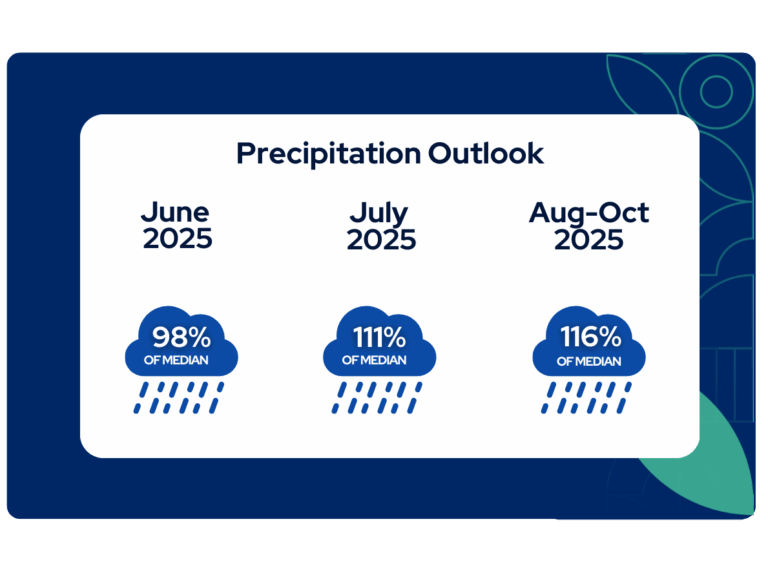
Impact on Canola Yields
Canola yields for the 2025/26 season are projected to increase compared to the previous season. Octopusbot forecasts the total canola production for this season to be higher than AAFC’s estimates and the five-year average
However, the latest estimate was revised down from the previous month, driven by declining soil moisture in April 2025 and a weaker May precipitation outlook. Provincial-level production reductions were recorded in Saskatchewan, Manitoba, and Alberta.
The improved rainfall outlook from June to October 2025, with above-median levels of precipitation, may support yield performance across major producing regions.
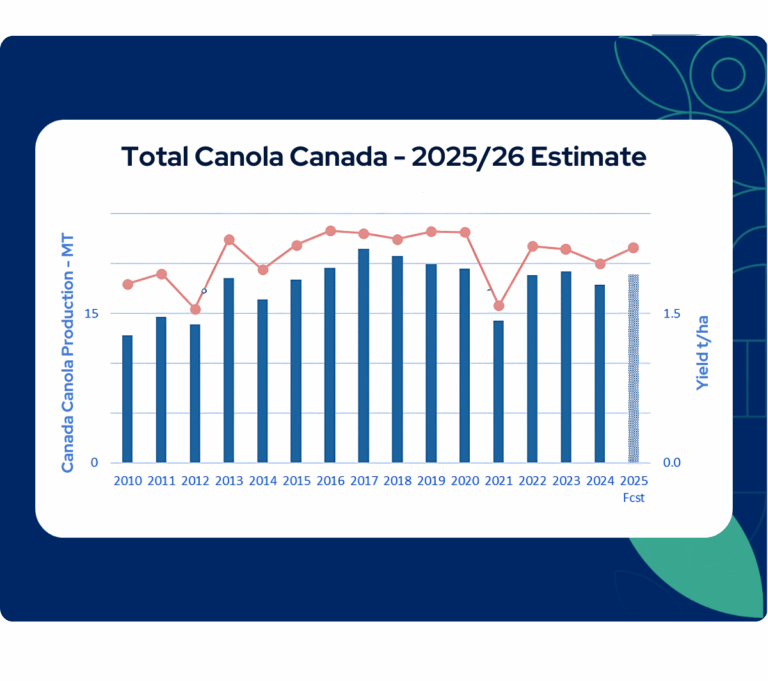
China’s Tariffs May Shift Global Canola Trade Flows
According to Reuters, China is set to introduce 100% tariffs on Canadian canola oil in 2025, as part of an ongoing trade dispute. The decision follows a rise in Canadian exports, which China says have disrupted its domestic industry. These tariffs could impact demand for Canadian canola, particularly genetically modified (GM) varieties that dominate Canada’s output.
Meanwhile, Grain Central reports that China has approved GM canola imports from Australia, potentially redirecting trade flows. Australia may emerge as a competitive supplier, especially if Chinese restrictions on Canadian cargoes tighten further.
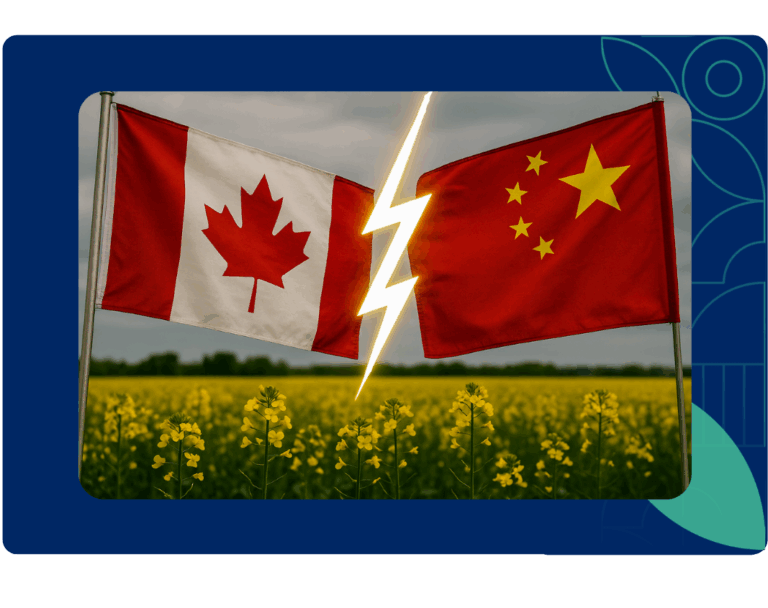
Octopusbot’s Forecast Accuracy
Octopusbot’s AI forecasting models continue to showcase impressive accuracy achieving an average accuracy of 97.4% on final estimates this year. The models achieved an average 95% accuracy 7 months ahead of the season’s end. Anticipating market-moving production trends well ahead of traditional agencies is crucial for enabling agribusinesses to navigate volatile grain markets, mitigate risk, and make confident, data-driven decisions.
In April 2024, Octopusbot predicted within 95% accuracy range, that the season’s production would trend lower than the USDA, 7 months before the final estimate and 1 month before USDA, with a difference of 2.7% on the final estimate.
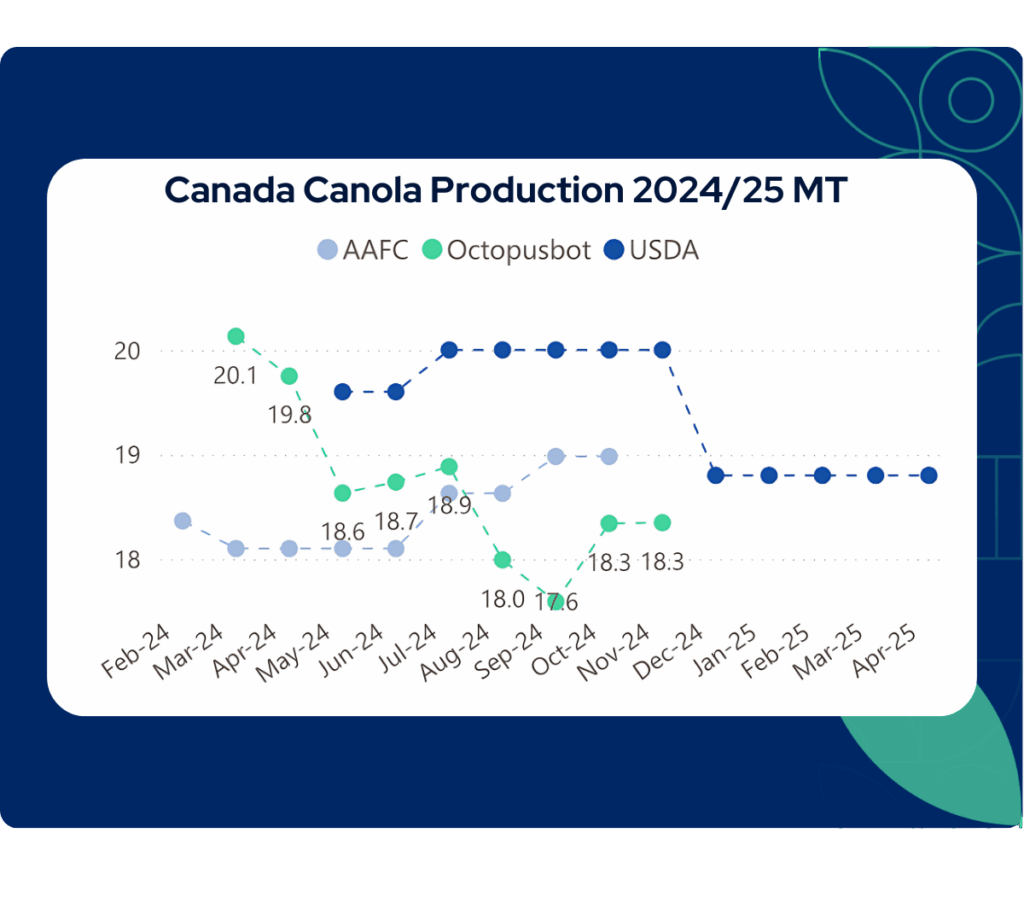


Comments are closed